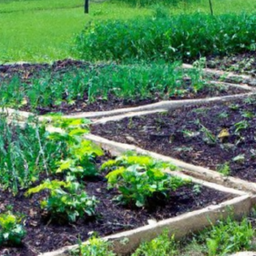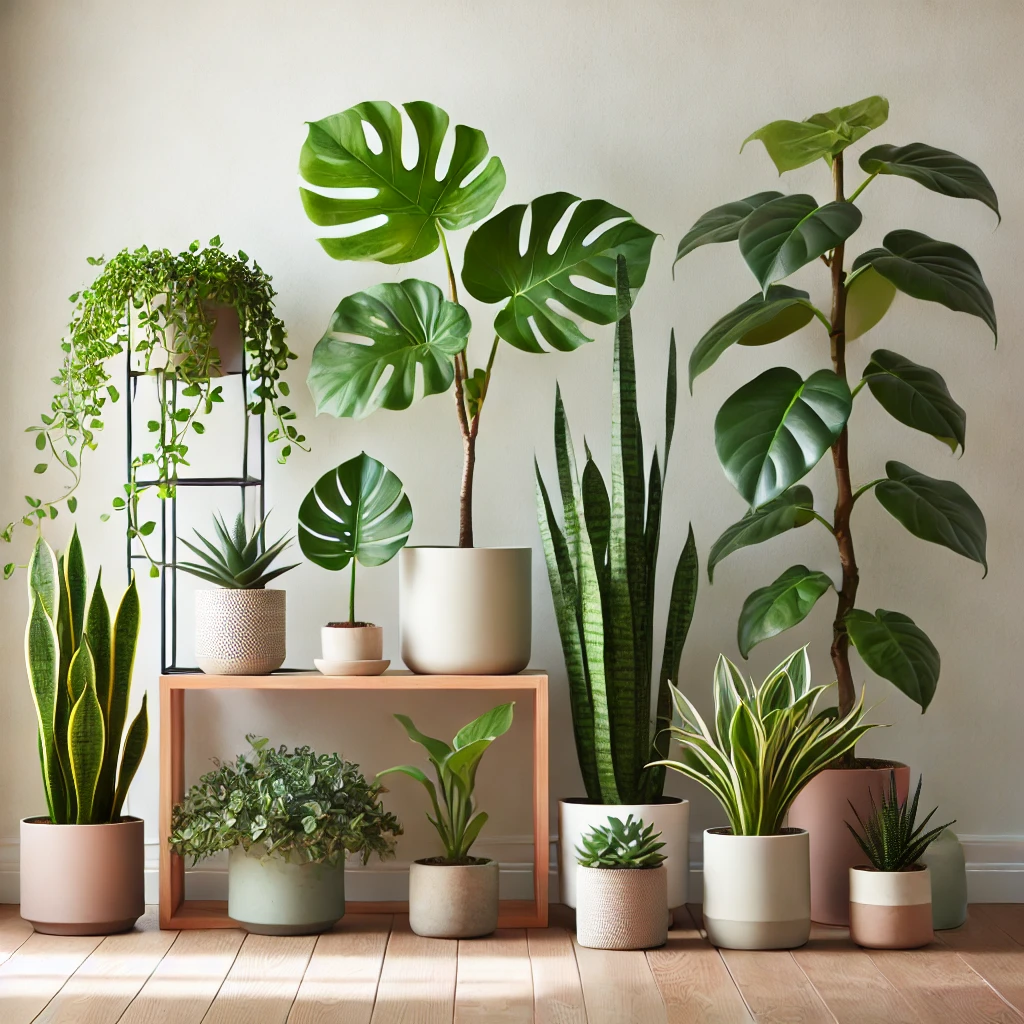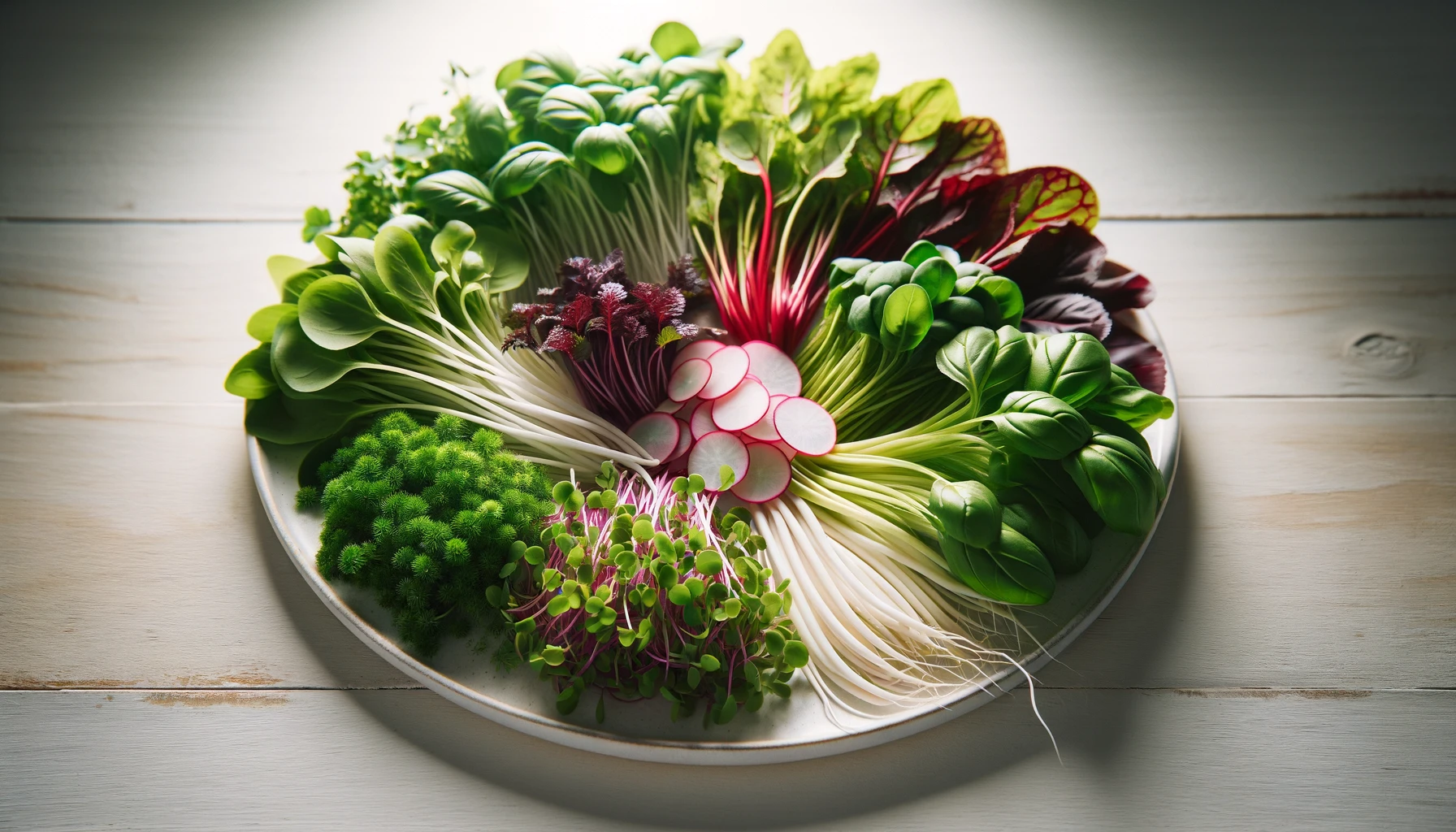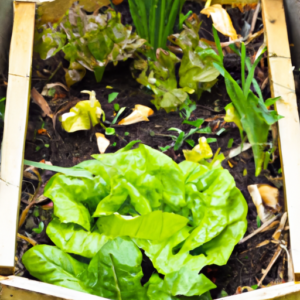In this article, you will discover practical and effective ways to extend the growing season in your vegetable garden. Whether you are a seasoned gardener or just starting out, learning how to prolong the growing period can significantly increase your yield and allow you to enjoy fresh, homegrown produce for a longer period. From utilizing row covers and cold frames to implementing crop rotation and choosing the right varieties, these techniques will help you make the most out of your vegetable garden throughout the year. So, get ready to unlock the secrets to an extended growing season and watch your garden flourish with abundance!
1. Choose the Right Location
1.1 Select a Sunny Spot
When deciding where to locate your vegetable garden, it’s crucial to choose an area that receives ample sunlight. Most vegetable crops require at least six to eight hours of direct sunlight daily to thrive. Sunlight is essential for photosynthesis, the process by which plants convert light energy into sugars, which fuels their growth. Locate your garden in a spot that has minimal shade from trees or buildings to ensure your plants receive the maximum amount of sunlight possible.
1.2 Consider Microclimates
In addition to selecting a sunny spot, it’s beneficial to consider the microclimates in your garden. Microclimates are small areas within a larger climate that have slight variations in temperature and humidity. For example, a south-facing wall of your house might provide extra warmth and protection from cold winds, creating a microclimate that is more suitable for growing heat-loving plants. By understanding the microclimates in your garden, you can strategically place crops to take advantage of these variations and extend the growing season.
1.3 Utilize Heat Absorbing Materials
To further enhance your vegetable garden’s ability to absorb and retain heat, consider utilizing heat absorbing materials. Dark-colored rocks, bricks, or water-filled containers placed strategically throughout your garden can absorb heat during the day and release it slowly during cooler nights, providing a more favorable environment for your plants. This technique can help extend the growing season by creating a microclimate with a slightly higher average temperature, allowing you to grow crops that may not typically thrive in your area.
2. Prepare the Soil
2.1 Test and Amend the Soil
Before planting your vegetable garden, it’s essential to test and amend the soil to ensure it has the necessary nutrients and pH level to support plant growth. You can easily test your soil using a home testing kit or by sending a sample to a local agricultural extension office. Once you know the soil’s deficiencies, you can add organic amendments like compost, well-rotted manure, or specific fertilizers to improve its quality. Properly amended soil provides a healthy foundation for your plants and can contribute to a longer and more productive growing season.
2.2 Add Organic Matter
Another way to prepare your soil for an extended growing season is to incorporate organic matter. Organic matter, such as compost or leaf mulch, improves soil structure, drainage, and fertility. It increases the soil’s ability to retain moisture and nutrients, promoting healthier root growth and overall plant vitality. By adding organic matter to your garden beds, you create an ideal environment for your crops to thrive, giving them a head start in the growing season and potentially extending their productivity.
2.3 Mulch the Soil
Mulching your garden beds is an effective technique for extending the growing season. A layer of organic mulch, such as straw, wood chips, or shredded leaves, helps regulate soil temperature, conserves moisture, suppresses weed growth, and prevents soil erosion. By insulating the soil, mulch can create a barrier against temperature fluctuations, protecting your plants’ roots from extreme heat or cold. This thermal insulation allows for consistent soil temperatures, enabling you to start planting earlier in the spring and extend the growing season in the fall.
3. Start Seeds Indoors
3.1 Determine the Ideal Planting Dates
Starting seeds indoors gives you a head start on the growing season by allowing you to sow and nurture your plants before the weather is suitable for direct outdoor planting. To determine the ideal planting dates, consult a local gardening guide or online resource that provides information on the average last frost date in your area. Count back from that date, considering the recommended germination and growth time for each vegetable variety, to determine when you should start your seeds indoors. This way, you can transplant well-established seedlings into your garden when the weather permits.
3.2 Use Seed Starting Trays or Pots
To successfully start seeds indoors, it is recommended to use seed starting trays or pots. These containers provide the optimal environment for germination and early seedling growth. Seed starting trays are shallow containers divided into individual cells, allowing you to start multiple seeds at once. Alternatively, you can use small individual pots or recycled containers with drainage holes. Fill these containers with a sterile seed starting mix, sow the seeds at the appropriate depth, and keep them well-watered and warm until germination occurs.
3.3 Provide Adequate Light and Warmth
To ensure healthy seedling growth, it’s essential to provide adequate light and warmth. Place your seed trays or pots near a south-facing window where they receive a minimum of six hours of direct sunlight each day. If natural light is insufficient or inconsistent, consider using fluorescent grow lights positioned a few inches above the seedlings. Proper lighting promotes strong stem growth and prevents seedlings from becoming leggy or weak. Additionally, maintain a warm temperature of around 65-75°F (18-24°C) to facilitate germination and seedling development.
4. Use Season Extenders
4.1 Cold Frames
Using season extenders, such as cold frames, can significantly help extend the growing season for your vegetable garden. A cold frame is a bottomless box with a transparent cover that allows sunlight to penetrate while protecting plants from cold temperatures and harsh winds. Constructed with materials like glass or polycarbonate panels, cold frames create a miniature greenhouse effect. By placing cold-tolerant crops or seedlings inside, you can start planting earlier in the spring and continue growing well into the fall, as the cold frame traps heat and provides insulation.
4.2 Row Covers
Row covers are lightweight, permeable fabrics that act as a protective shield for your crops. These covers allow sunlight, air, and water to pass through while providing insulation and protection from frost, wind, and insect pests. Row covers are typically made from materials like spun-bonded polyester or polypropylene and can be draped over rows of plants or supported by hoops. Using row covers provides a few extra degrees of warmth, enables earlier planting in the spring, and extends the growing season by protecting sensitive crops from cold temperatures and frost.
4.3 Greenhouses
A greenhouse is the ultimate season extender, offering complete control over environmental conditions. Greenhouses are enclosed structures that capture and retain heat, creating a controlled microclimate for plants to thrive. They come in various sizes and styles, from small backyard hobby greenhouses to larger commercial or community structures. Investing in a greenhouse allows you to start seeds, grow transplants, and cultivate vegetables year-round, even in colder climates. With the ability to regulate temperature, humidity, and ventilation, greenhouses offer flexibility and the most significant potential for extending the growing season.

5. Plant Cold-Tolerant Crops
5.1 Select Appropriate Varieties
When aiming to extend the growing season, it is crucial to select vegetable varieties that are cold-tolerant. Some vegetables are naturally more resilient to cold temperatures and can survive and even thrive in cooler conditions. Research and choose specific varieties that have been bred or adapted to withstand frost and low temperatures. Popular cold-tolerant crops include kale, spinach, carrots, radishes, and certain types of lettuce. By planting these varieties, you can begin harvesting earlier in the spring and continue growing late into the fall.
5.2 Plant in Fall or Early Spring
Another way to extend the growing season for cold-tolerant crops is to plan your planting schedule accordingly. Many cold-tolerant vegetables can be planted in the fall, taking advantage of the milder temperatures before winter arrives. This allows the crops to establish strong root systems and continue growing during the cooler months. Additionally, planting early in the spring, as soon as the soil can be worked, gives the crops a longer growing period before the intense summer heat sets in. By timing your plantings strategically, you can maximize your vegetable garden’s productivity throughout the year.
5.3 Use Protective Measures
Even with cold-tolerant crops, it’s essential to use protective measures to shield them from harsh weather conditions. Consider using techniques like floating row covers, cloches, or low tunnels to provide additional insulation and protection against frost or extreme cold. Applying these protective measures can help maintain a stable temperature around the plants, preventing damage and extending their productive season. Monitor weather forecasts and take appropriate action, covering plants when frost or freezing temperatures are expected to ensure their safety and the continuation of your harvest.
6. Provide Extra Heat
6.1 Use Radiant Heat Sources
In regions with extremely cold temperatures, providing extra heat in your vegetable garden can help extend the growing season. Radiant heat sources, such as heating cables or mats, can be installed beneath the soil surface to warm the root zone of plants. These heat sources are particularly useful for heat-loving crops like tomatoes or peppers that require consistently warm temperatures for optimal growth. By maintaining adequate soil warmth, you can grow these temperature-sensitive vegetables for a more extended period, even when the surrounding air temperatures are too cold.
6.2 Install Hoop Houses
Hoop houses, also known as high tunnels, are simple structures made of metal or PVC hoops covered with a translucent plastic or greenhouse film. They act as mini greenhouses, capturing and retaining heat while allowing sunlight to penetrate. By installing a hoop house over your vegetable beds, you create a warmer microclimate that can extend the growing season significantly. Hoop houses offer protection from frost and cold winds, allowing you to grow tender crops or start seedlings earlier in the spring and continue harvesting well into the fall.
6.3 Utilize Heat Lamps
Heat lamps are another effective way to provide additional warmth to your vegetable garden. In areas with freezing temperatures or during exceptionally cold nights, suspending heat lamps above your plants can help protect them from the cold. Heat lamps emit radiant heat, warming the surrounding air and preventing frost damage. It’s important to position the heat lamps at an appropriate height to avoid overheating or burning the plants. By using heat lamps strategically, you can mitigate the effects of cold weather and extend the growing season for your vegetable garden.
7. Implement Crop Rotation
7.1 Understand the Benefits and Principles
Crop rotation is the practice of systematically changing the placement of vegetable crops in your garden each year. It involves rotating different plant families to different areas to prevent soil-borne diseases, minimize pest populations, and improve overall soil health. Implementing crop rotation in your garden offers several benefits, including extended growing seasons. By diversifying the crops and following proper rotation principles, you can reduce the risk of pest and disease buildup, ensuring healthier plants that can produce for longer periods.
7.2 Plan Accordingly
To effectively implement crop rotation, it’s crucial to plan accordingly and keep track of what you plant each year. Develop a crop rotation schedule that spans several years, considering the specific needs and characteristics of each vegetable family. Ideally, rotate crops so that plants from the same family are not grown in the same location for at least three years. By following a well-structured rotation plan, you can break pest and disease cycles, maintain soil fertility, and extend the productive lifespan of your vegetable garden.
7.3 Avoid Planting Similar Crops
When implementing crop rotation, it’s essential to avoid planting similar crops or those from the same family in consecutive growing seasons. This practice prevents the buildup of pests and diseases that target specific plant families. For example, if you grow tomatoes in one bed this year, avoid planting any other Solanaceae family members (such as peppers or eggplants) in the same bed the following year. By diversifying your garden and rotating crops effectively, you can minimize plant stress, maintain soil health, and ultimately extend the growing season for a wider range of vegetables.
8. Apply Season Extension Techniques
8.1 Use Floating Row Covers
Floating row covers are lightweight fabrics that can be spread over plants to create a physical barrier against cold temperatures, wind, and insect pests. These covers “float” above the plants, hence the name, allowing sunlight, air, and water to reach them while providing insulation. Floating row covers can be used to protect delicate seedlings, extend the growing season, and even promote earlier fruit set in certain crops. By using this technique, you can maintain a more favorable microclimate for your vegetables, ensuring their growth and productivity even in less favorable weather conditions.
8.2 Employ Cloches
Cloches are bell-shaped or cylindrical protective coverings placed over individual plants to create a mini greenhouse effect. They can be made from glass, plastic, or even recycled materials like plastic bottles or milk jugs. Cloches act as a physical barrier, trapping heat and protecting plants from cold temperatures, frost, and wind. By placing cloches over young or vulnerable plants, you can provide a warm and sheltered environment, effectively extending their growing season. Additionally, cloches can help harden off transplants, allowing them to acclimate to outdoor conditions gradually.
8.3 Try Low Tunnels
Low tunnels, similar to hoop houses, are structures that consist of hoops covered with a translucent material like greenhouse film or row cover fabric. However, low tunnels are smaller and typically span one or two garden beds. By installing low tunnels, you create a protected microclimate within the tunnel, prolonging the growing season for your crops. Low tunnels offer advantages such as increased heat retention, wind protection, and improved moisture retention. They are particularly useful for extending the growing season for cool-season crops and protecting delicate seedlings from adverse weather conditions.
9. Extend the Harvest with Succession Planting
9.1 Grow Quick-Maturing Crops
Succession planting involves sowing small batches of the same crop at regular intervals throughout the growing season. This technique allows you to extend the harvest by ensuring a continuous supply of fresh vegetables rather than a single large harvest. To maximize the length of your growing season, choose quick-maturing varieties of your favorite vegetables. Fast-growing crops like radishes, lettuce, and green beans can be successively planted every few weeks, allowing you to continually harvest fresh produce throughout the growing season.
9.2 Sow Seeds in Staggered Intervals
To effectively implement succession planting, it’s important to stagger your seed sowing intervals. This means sowing a portion of your seeds, waiting a designated amount of time, and then sowing the next batch. The waiting period should be determined based on the estimated time it takes for the crop to reach maturity. By spacing out your seed sowing, you ensure a continuous supply of vegetables by preventing a glut of produce all at once. Staggered sowing intervals provide an extended harvest window, allowing you to enjoy fresh, homegrown vegetables for a more extended period.
9.3 Remove Spent Plants Regularly
To make room for succession plantings and keep your vegetable garden productive, it’s crucial to remove spent or finished plants regularly. Once a crop has reached the end of its growing cycle and has been harvested entirely, remove the remaining plant debris from the garden bed. By promptly clearing out these plants, you create space for new crops or seedlings. Keep in mind that timely removal of spent plants prevents the risk of disease or pest carryover and allows for proper soil preparation and planting of the next succession crop.
10. Monitor and Adjust Environmental Conditions
10.1 Check and Adjust Temperature
To successfully extend the growing season, it’s important to monitor and adjust the environmental conditions in your vegetable garden. Regularly check the temperature, both outdoors and inside any season extension structures you use, such as cold frames or greenhouses. Temperature fluctuations can greatly impact plant growth and development. If necessary, use portable thermometers or weather monitoring devices to assess the temperature accurately. Adjusting temperature levels may involve opening or closing vents, adding or removing insulation, or providing additional heat sources to maintain optimal growing conditions.
10.2 Manage Moisture Levels
Proper moisture management is also crucial for extending the growing season. Monitor the moisture levels in your garden beds regularly, ensuring that the soil remains consistently moist but not waterlogged. Depending on your climate and weather conditions, you may need to adjust your watering routine accordingly. Consider using techniques like drip irrigation or soaker hoses to provide efficient watering while minimizing evaporation. Adequate moisture levels promote healthy root growth and overall plant vigor, ultimately extending the growing season by providing optimal conditions for growth and productivity.
10.3 Control Ventilation
Controlling ventilation is particularly important when using season extension structures like greenhouses or hoop houses. Proper ventilation prevents the buildup of excessive heat, humidity, and condensation, which can have detrimental effects on plant health. It also helps regulate airflow, preventing the development and spread of diseases. Monitor the airflow regularly by opening and closing vents or windows as needed. By providing adequate ventilation, you can maintain a healthy and stable growing environment for your vegetables, ensuring their prolonged growth and productivity throughout the extended growing season.






